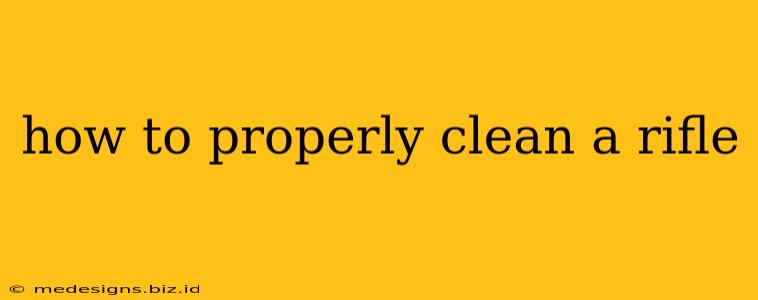Maintaining your rifle is crucial for its longevity, accuracy, and safe operation. Regular cleaning prevents malfunctions, ensures reliable performance, and extends the life of your firearm. This comprehensive guide will walk you through the proper steps for cleaning your rifle, regardless of caliber or action type. We’ll cover everything from necessary tools to safety precautions.
Essential Tools for Rifle Cleaning
Before you begin, gather the necessary tools. Investing in quality cleaning supplies is an investment in the care of your firearm.
- Cleaning Rod: Choose a rod made of high-quality materials like bronze or carbon fiber to avoid scratching the bore. Avoid using a one-piece rod for longer barrels, as it can bend and damage your rifle. A sectional rod is much safer.
- Patches: These are used to push cleaning solvents and lubricants through the barrel. Use patches that are appropriately sized for your caliber. Cotton patches are commonly used.
- Bore Brush: This brush is crucial for scrubbing the barrel clean. Make sure it’s the correct size for your caliber. Nylon or bronze brushes are preferred.
- Cleaning Solvents: Choose a solvent appropriate for your firearm's caliber and type. Many solvents are available, each designed for specific purposes. Follow the manufacturer’s instructions.
- Gun Oil: Use a high-quality gun oil specifically designed for firearms. This will lubricate the moving parts and protect your rifle from corrosion.
- Cleaning Patches: You'll need a good supply of these to push the solvent and lubricant through the barrel.
- Receivers Cleaning Kit: To clean the outer parts of your rifle effectively.
- Gloves: Protect your hands from solvents and chemicals.
- Eye Protection: Safety first! Always wear eye protection.
Step-by-Step Rifle Cleaning Process
Safety First: Always ensure your rifle is unloaded before beginning any cleaning process. Visually inspect the chamber and magazine to confirm that it's completely empty. Point the muzzle in a safe direction at all times.
1. Disassembly
Disassemble your rifle according to the manufacturer's instructions. This often involves removing the bolt, magazine, and possibly other components. Consult your rifle's manual for specific disassembly procedures.
2. Cleaning the Barrel
This is the most critical part of the cleaning process.
- Run a dry patch through the barrel: This removes any loose debris.
- Apply cleaning solvent: Pour a small amount of solvent onto a bore brush.
- Scrub the barrel: Run the brush back and forth through the barrel several times. Work slowly and methodically.
- Run a few dry patches: Continue until the patches come out clean. This shows that the solvent has removed all the fouling.
3. Cleaning the Bolt and Action
Carefully clean all parts of the bolt and receiver with a suitable cleaning solvent and brush. Pay attention to any areas where there might be residue or buildup. Lubricate moving parts appropriately.
4. Cleaning the Exterior
Clean the outside of your rifle using a suitable gun cleaning solvent and a rag or brush. This removes dirt, grime and fingerprints.
5. Lubrication
Apply gun oil to all moving parts, including the bolt, trigger mechanism, and any other areas where friction occurs. Use a sparingly amount. Excessive oil can attract dirt and cause malfunctions.
6. Reassembly
Carefully reassemble your rifle, following the manufacturer's instructions precisely.
Frequency of Cleaning
The frequency of cleaning depends on factors such as how often you shoot, the type of ammunition used, and the environment. After every shooting session is generally recommended. At the very least, you should clean your rifle once a month.
Troubleshooting Common Rifle Cleaning Issues
- Stuck patches: If a patch gets stuck in the barrel, try using a cleaning rod with a slightly smaller diameter or applying more solvent.
- Scratches in the barrel: Use a high-quality cleaning rod and avoid excessive force during cleaning.
- Difficult bolt operation: Clean the bolt thoroughly and lubricate the appropriate parts.
By following these steps and practicing safe gun handling, you can ensure your rifle remains in top condition for years to come. Remember, consistent cleaning is key to maintaining accuracy, reliability, and longevity of your firearm.
